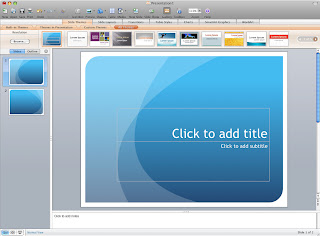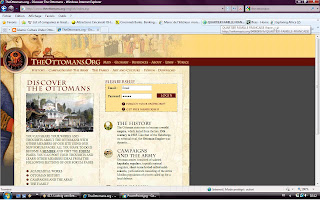
One cannot think about Culture without reflecting on Religion. So far, Religion has been the most important factor in shaping almost all the Cultures of the world.
mardi 27 avril 2010
jeudi 22 avril 2010
After the Presentation
Today, my teammates and I presented our work in the form of a PowerPoint presentation. I was really worried about it even if I tried to show confidence to my teammates. How can I qualify the presentation? well, I cannot say it was excellent since it would be a dishonest claim. Rather, I can say it was more or less good. Indeed, we had some weaknesses in some areas like time management, but this does not affect the work very much (we should not forget that the technical problem at the beginning also took some of the time :)).
We did a great job trying to find the logical linking between the four different research interests, and it was not easy to organize those different topics in a way to give a rather clear image about the influence of religion on culture.
As far as I am concerned, I was happy since I said all I wanted to say without having neither memorized it by heart not referred to any notes. I told myself that, if I am to give a presentation, I will talk spontaneously. I considered today's presentation as an exercise for future talks (after all, I am an IS major!). Therfore, I have to train myself to this kind activities. It involves facing an audience, trying to be natural and concentrating on the idea I want to convey. In brief, my impressions about today's oral presentation are positive.
We did a great job trying to find the logical linking between the four different research interests, and it was not easy to organize those different topics in a way to give a rather clear image about the influence of religion on culture.
As far as I am concerned, I was happy since I said all I wanted to say without having neither memorized it by heart not referred to any notes. I told myself that, if I am to give a presentation, I will talk spontaneously. I considered today's presentation as an exercise for future talks (after all, I am an IS major!). Therfore, I have to train myself to this kind activities. It involves facing an audience, trying to be natural and concentrating on the idea I want to convey. In brief, my impressions about today's oral presentation are positive.
lundi 12 avril 2010
Power Point Presentation

After the data collection step, it is now the time for the powerpoint presentation.I have started working on my part of the presentation for a week now, but I still need to meet with my teammates in order to have an agreement on the introduction, the conclusion, and the linking slides. Now I'm nearly done with my part of the presentation. I thought at the beginning I would not have much to say. But when I made some order in the information I have and the different resources I dispose of, I found out that I have a lot of things that I would like to include in my presentation. I'm afraid 4 mimutes won't be enough, but I will try to respect the time constraint.
I enjoyed creating themes in the new Power Point, switching colors, and trying to make my presentation more attractive. I liked working on the presentation because I had a lot of fun while doing it.
Here, I have to say that, honestly, the workshop was not very helpful since I already knew most of what the staff from CITI said.
I am a bit scared because I don't want to forget what I want to say. But I am confident everything will be okay.
Summary: Ottoman Women Builders, by Lucienne Thys-Senocak

In her book “Ottoman Women Builders”, Lucienne Thys-Senocak examines how women in the Ottoman Empire used to assert themselves in this Islamic society. This analysis is done through the life of a royal woman, Hadice Turhan Sultan, queen mother of Mehmed IV. Thys-Senocak shows how the patronage of the arts, and especially architecture, helped this royal women to shape a representation of herself in politics and public life. Living in a conservative society like the Ottoman one, embracing Islam, and being the wife of the Protector of the Faith, Hadice Turhan had to find other ways to impose herself, unlike contemporary influent women such as Catherine de Medici or Elizabeth I who could have iconic representations and portraits of themselves. Through commissioning the building of mosques, public baths, houses for the pilgrims, and even military fortresses, she has been able to demonstrate both her piety and her political authority.
The book also deals with other Ottoman women, be them Muslims or non-Muslims and their role in diplomacy and the preparation of the ground for the male decision-making. As Lucienne Thys-Senocak acknowledges it, the correspondence between the Ottoman women of the Harem and other European women, as well as the facility of mobility and action of young women that have been drawn through the devshirme system had a lot of influence in political negociations.
At the heart of “Ottoman Women Builders” is the intersection between the gender, the artistic and political perspectives in regarding women in the Ottoman society.
Thys-Senocak, Lucienne. Ottoman Women Builders: The Architectural
Patronage of Hadice Turhan Sultan. Burlington: Ashgate Publishing Company, 2006.
jeudi 1 avril 2010
Inscription à :
Articles (Atom)

